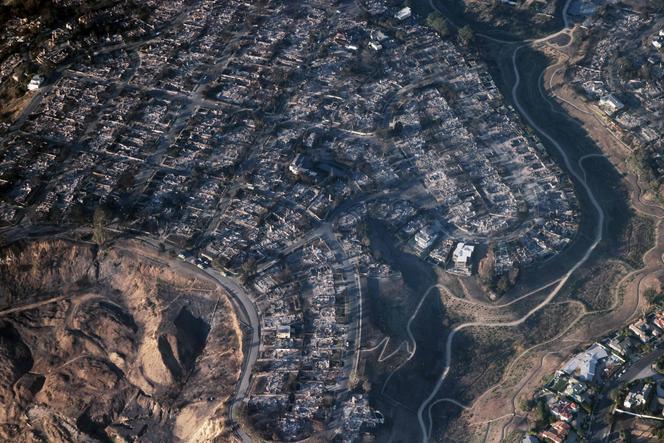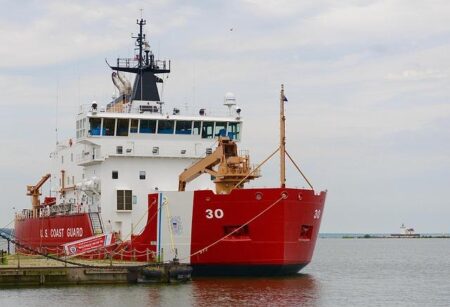Los Angeles Wildfire Shatters U.S. Records for Economic Devastation
Major contributors to the unprecedented financial losses include:
- Severe damage to premium residential neighborhoods and commercial hubs
- Mass displacement and associated housing expenses for thousands of residents
- Extensive emergency response and prolonged firefighting operations
- Disruptions to tourism and local economies with long-lasting effects
| Sector | Projected Loss (in billions) | Description of Impact |
|---|---|---|
| Residential | $13.2 | Thousands of homes destroyed or severely damaged |
| Commercial | $9.1 | Retail centers and office buildings heavily impacted |
| Infrastructure | $5.7 | Damage to utilities, transportation networks, and public services |
Root Causes Behind the Escalating Costs of the Los Angeles Fire
Insurance companies are bracing for a surge in claims as thousands of properties face total or partial loss, placing significant strain on local economies.Additionally, rising construction material prices and labor shortages are expected to inflate rebuilding costs substantially. The table below summarizes the primary drivers behind the soaring expenses:
| Factor | Effect on Costs |
|---|---|
| High Population Density | Increases number of properties affected |
| Extreme Weather Conditions | Accelerates fire spread |
| Infrastructure Damage | Raises emergency response and repair expenses |
| Spike in Insurance Claims | Amplifies financial pressure on insurers |
| Rising Construction and Labor Costs | Elevates rebuilding expenditures |
- Resource Demands: Mobilization of thousands of firefighters and specialized equipment.
- Evacuation and Health Costs: Expenses related to temporary shelter and emergency medical services.
- Environmental Recovery: Long-term funding required for ecosystem restoration and soil stabilization.
Long-Term Economic and Environmental Repercussions of the Los Angeles Fire
The aftermath of this devastating wildfire reveals an economic impact far exceeding initial projections.Insurance claims are anticipated to reach upwards of $30 billion, cementing this event as the most expensive wildfire in U.S. history. Beyond the immediate destruction of property, the fire has disrupted local commerce, leading to significant job losses and a downturn in tourism. The strain on municipal budgets is immense, as emergency services and rebuilding efforts require substantial financial resources.
From an environmental standpoint, the fire has left a lasting scar on the urban-wildland interface, increasing susceptibility to soil erosion and flooding during upcoming rainy seasons. Air quality plummeted during and after the blaze,exacerbating respiratory health issues among residents. Key environmental challenges moving forward include:
- Soil erosion risks that threaten water quality and increase flood potential
- Loss of native plant and animal species due to habitat destruction
- Significant carbon emissions contributing to climate change acceleration
| Economic Indicator | Estimated Impact |
|---|---|
| Property Damage | $30 billion |
| Job Losses | Over 15,000 positions |
| Emergency Response Costs | $1.8 billion |
| Carbon Emissions (Million Tons) | 8.5 |
Proactive Measures to Minimize Fire Damage in Urban Environments
To effectively counter the growing threat of urban wildfires, cities must adopt comprehensive strategies that emphasize prevention, resilience, and swift response. This includes strengthening building regulations to require fire-resistant construction materials, incorporating green spaces that act as natural firebreaks, and utilizing cutting-edge early detection systems powered by artificial intelligence. Public awareness campaigns are equally vital, educating residents on fire risks and preparedness to ensure communities can respond quickly and safely during emergencies.
- Retrofitting existing buildings with sprinkler systems and fire-retardant coatings
- Enhanced urban vegetation management to reduce flammable materials
- Investment in wildfire modeling and simulation tools for improved emergency planning
- Coordinated efforts among agencies to streamline disaster response
| Strategy | Potential Impact | Expected Implementation Timeline |
|---|---|---|
| Fire-Resistant Construction Materials | High | Short-Term |
| AI-Driven Early Warning Systems | Moderate | Medium-Term |
| Community Fire Preparedness Initiatives | High | Immediate |
| Vegetation Control and Firebreaks | Moderate | Ongoing |
Conclusion
As investigations proceed into the causes and full scope of the Los Angeles wildfire, both officials and residents face the immense challenge of rebuilding amid unparalleled losses. With damages expected to exceed all previous records, this disaster not only represents a historic tragedy but also highlights the urgent need for enhanced wildfire preparedness and infrastructure resilience in the face of climate change. The coming months will be crucial for evaluating the long-term effects on the region and shaping policies that better safeguard communities against future catastrophic fires.




